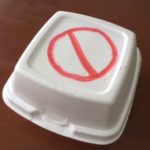Energy production contributes more Greenhouse Gas emissions than transportation…
…Especially in states that get most of their energy from burning coal, as Missouri does. A recent estimate shows that electricity production contributed to 33% of total emissions versus 27% for transportation.
Reducing consumption for homes and businesses is crucial to lowering our collective carbon footprint. Luckily, there are financial incentives to going green. Ameren has renewed its energy incentive program for homes and businesses, helping to facilitate the switch to energy efficient lighting and equipment.
This is great news for restaurants, as they tend to consume over three times the energy as other commercial buildings due to the need for refrigeration, lighting, and cooking equipment, all of which require juice to run. Ameren is offering rebates for all sorts of energy-sucking kitchen equipment, but the easiest way to take advantage of their program is by replacing their light bulbs with LED alternatives. (CFLs are not as efficient or environmentally friendly as LEDs – they contain mercury, making them more difficult to dispose of, and they have a reputation for burning out quickly).
You must pre-apply to take advantage of Ameren’s incentive program for homes and businesses, which include rebates for LEDs as well as big-ticket items, such as central air conditioning units.
Other ways to save: Energy Star‘s handy list of low-cost, energy-saving tips for restaurants and homes:
- Recalibrate to stay efficient.The performance of your kitchen equipment changes over time. Thermostats and control systems can fail, fall out of calibration, or be readjusted. Take the time to do a regular thermostat check on your appliances, refrigeration, dish machines, and hot water heaters and reset them to the correct operating temperature.
- Employ bi-level switching. Bi-level switching allows you to control a lighting system in groups of fixtures or lamps. For example, bi-level switching allows you to turn off half of the lights in a room off when full illumination is not required.
- Dim the lights.Dimmers are available for both LEDs and CFLs (ensure that you use dimmable CFLs). Daylight dimmers are special sensors that automatically dim room lights based on the amount of free and natural daylight available.
- Try daylight sensors (photocells).A common inefficiency of exterior lighting systems is a tendency to “dayburn,” leaving exterior lights on during the day, wasting energy and money. This problem can be prevented by installing daylight sensors that turn the lights on and off automatically based on daylight.
Common-sense, low-cost energy-saving items and actions for your home or business:
- Weather stripping along old windows and doors.
- Programmable thermostats: Program the temperature to be lower/higher by a few degrees while your home or business is unoccupied. Avoid turning off the system entirely, as the work required by the machinery to catch up when the temperature drops/rises by over 6 degrees can be taxing and inefficient. Nest Thermostats allow owners to manipulate the temperature of their home or business remotely.
- Check your vents to make sure they are open and clean.
- Clean A/C outdoor intake unit with a hose to ensure it is not clogged or dirty.




